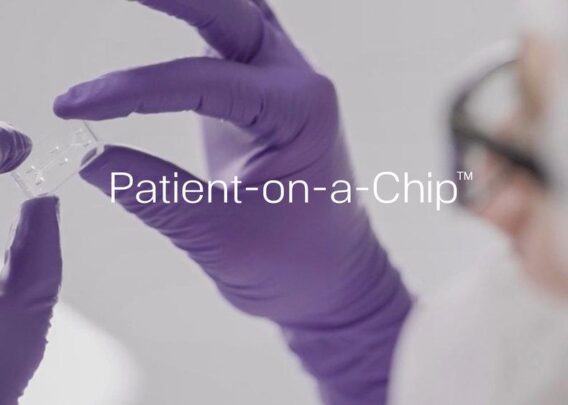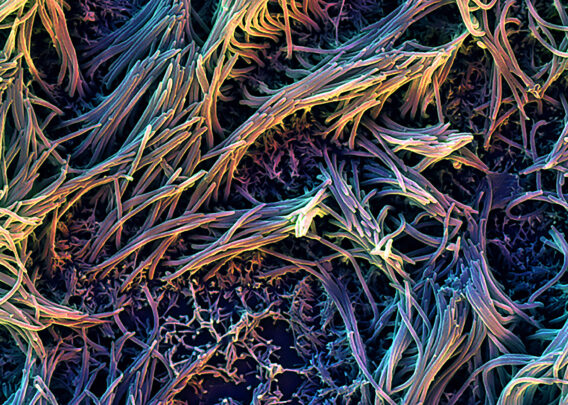Recently, we announced that the Emulate Liver-Chip S1 was accepted into the FDA’s ISTAND pilot program. To learn more, we sat down with Dr. Lorna Ewart, Chief Scientific Officer at Emulate, for a conversation about what this acceptance means for the company, the drug development industry, and the future of drug safety assessment.
Q: What exactly is the FDA ISTAND program, and why is it relevant to drug development?
Lorna Ewart: The ISTAND program—which stands for Innovative Science and Technology Approaches for New Drugs—is a pilot initiative introduced by the FDA to qualify innovative tools and technologies for use in regulatory submissions. Essentially, it provides a pathway for new methodologies, like our Organ-Chips, to be recognized by the FDA as a reliable and robust drug development tool in drug development.
When sponsors include data from a qualified drug development tool in their regulatory submissions, FDA reviewers can have confidence in that data’s quality and reproducibility. This allows them to focus on the experiment outcome and how the data support the sponsor’s proposal, such as initiating a clinical trial, without focusing on how the data was generated.
Q: How does this acceptance impact Emulate and the broader pharmaceutical industry?
LE: For Emulate, being accepted into the ISTAND program is an important milestone that represents the Liver-Chip S1’s potential applicability in regulatory contexts. For the pharmaceutical industry, it indicates the increasing interest in using more human-relevant models earlier in the drug development process. Ultimately, full qualification could mean more accurate prediction of drug-induced liver injury (DILI) for drugs whose structural analogs have previously shown a DILI response in the clinic. This could improve patient safety by reducing the risk of adverse effects that traditional models may miss.
Q: Can you walk us through the process of gaining acceptance into the ISTAND program?
LE: Certainly. The ISTAND program involves a three-stage process, the first of which is the Letter of Intent (LOI). For this, we submitted a detailed proposal outlining the unmet need in drug development that our technology addresses. In this stage, establishing a narrow context of use is paramount, and we focused on demonstrating how the Liver-Chip S1 can better predict small-molecule DILI compared to traditional models—specifically in cases comparing structurally similar compounds, where one is known to cause clinical DILI.
With the LOI accepted, we’re moving into the second stage of the ISTAND program, the Qualification Plan. In this phase, we will work with the FDA to design a study plan aimed at demonstrating reproducibility and repeatability of our Liver-Chip S1 in predicting DILI in the approved context of use. More specifically, when carrying out these studies, we’ll be showing that our technology produces consistent results across different laboratories and with various hepatocyte donors. We’ll also be working closely with the FDA to ensure our Qualification Plan meets all regulatory expectations. This partnership is crucial for addressing any questions and aligning the data requirements.
The third and final stage is Full Qualification. Here, we will present the data from our Qualification Plan to the FDA. If successful, our Liver-Chip S1 would be fully qualified for use in regulatory submissions within the stated context of use.
Q: What were some key findings from your studies that supported your submission?
LE: Our submission was underpinned by robust data from our study published in Communications Medicine, where we evaluated 27 small-molecule drugs using the Liver-Chip S1 on a single donor. The drugs were categorized into five levels of severity based on their Garside DILI rank and included seven pairs of toxic drugs and their non-toxic structural analogs for direct comparison. The Liver-Chip S1 achieved an impressive 77% sensitivity and 100% specificity for all 27 compounds tested. We then tested a subset of 18 drugs on an additional donor and combined the data from both donors, where we found that the sensitivity increased to 87%, while specificity was maintained at 100%. Importantly, the Liver-Chip S1 also successfully distinguished between all seven pairs of the drugs and their structural analogs—a result that proved crucial to our submission. Altogether, these results mean that the Liver-Chip S1 was highly effective in correctly identifying both toxic and non-toxic compounds.
The Liver-Chip S1 was able to detect liver toxicity that conventional models—including spheroids and animal models—failed to predict. This highlights the potential of our technology to improve drug safety assessments. In a follow-up study, we developed the Liver-Chip S1 DILI Score, which quantifies the severity of liver injury on a scale of 1 to 5. This score aligns with clinical outcomes and provides a nuanced understanding of a compound’s hepatotoxic potential.
Q: How might the Liver-Chip S1 change the way companies assess drug safety, particularly regarding liver toxicity?
LE: Once the Liver-Chip S1 has passed each of the qualification stages, it could help to significantly enhance how pharmaceutical companies evaluate liver toxicity within the context-of-use defined for the submission. By providing a more human-relevant model, companies can better predict the potential liver toxicity of drugs whose structural analogs have previously shown a toxic response, reducing the risk of late-stage failures. Data from the Liver-Chip S1 can inform go/no-go decisions and guide modifications to chemical structures to improve safety profiles.
Q: Are there other applications for the Liver-Chip S1 beyond the scope of the ISTAND program?
LE: Absolutely. While our ISTAND submission focuses on a very specific context of use, researchers around the world have leveraged the Liver-Chip for various applications. Beyond small molecule toxicity testing, Liver-Chips have been used to assess the safety of monoclonal antibodies, cannabinoids, and gene therapy delivery vehicles. One particularly impactful example is its use in early drug development: Scientists at Moderna leveraged the Liver-Chip to screen 35 novel lipid nanoparticles (LNPs), allowing them to identify the most promising candidates before advancing to costly and lengthy non-human primate studies. Additionally, the Liver-Chip can model liver diseases, providing unique insights into disease progression and potential therapeutic approaches. For example, in a 2021 Cell paper, researchers used a Liver-Chip to model alcohol-associated liver disease (ALD) using human-relevant blood alcohol levels and clinically meaningful endpoints. The Liver-Chip exhibited key markers of ALD, such as lipid accumulation, oxidative stress, and bile canalicular remodeling, after ethanol exposure. These findings indicate that the Liver-Chip could provide more human-relevant assessments of ALD and aid in the development of novel therapies.
Q: Any final thoughts you’d like to share about this milestone?
LE: We’re excited about this significant step forward. The Liver-Chip S1’s acceptance into the ISTAND program is not only a promising development for our technology but also marks progress towards widespread incorporation of more predictive and human-relevant models in drug development. We look forward to working with the FDA in the next phase and are enthusiastic about the potential our technology has in helping the broader scientific community enhance drug safety and efficacy.




